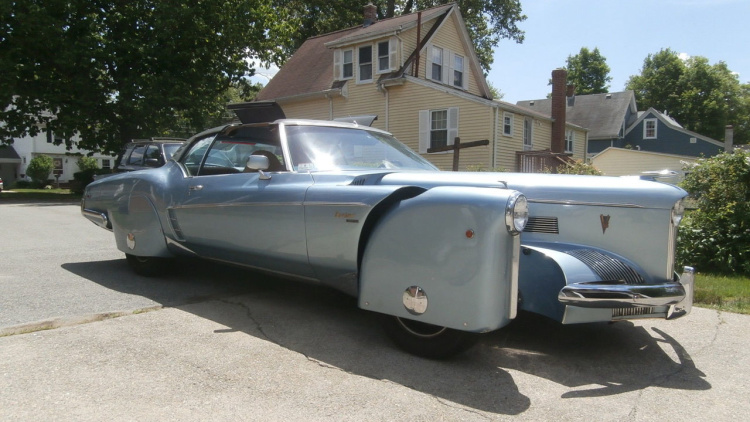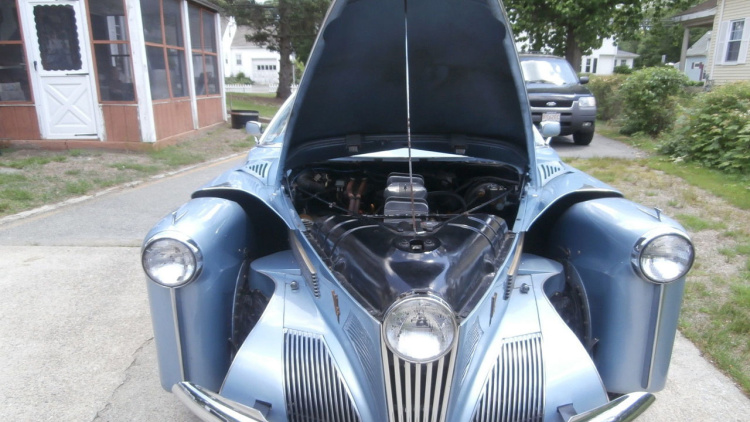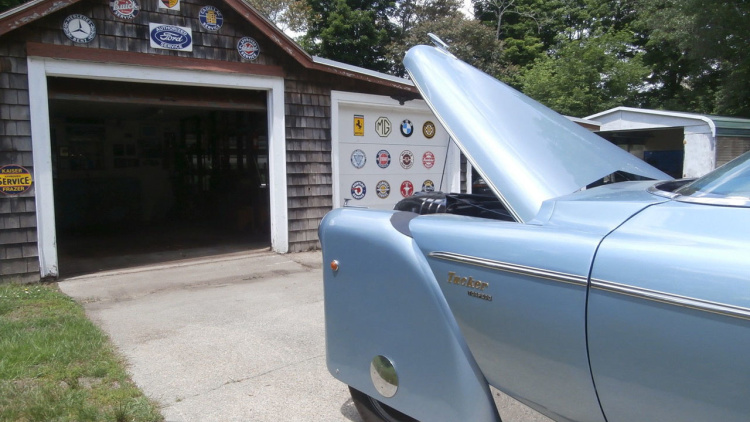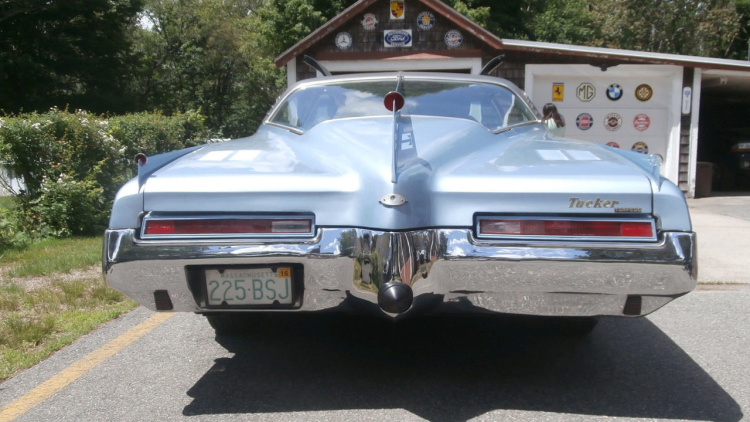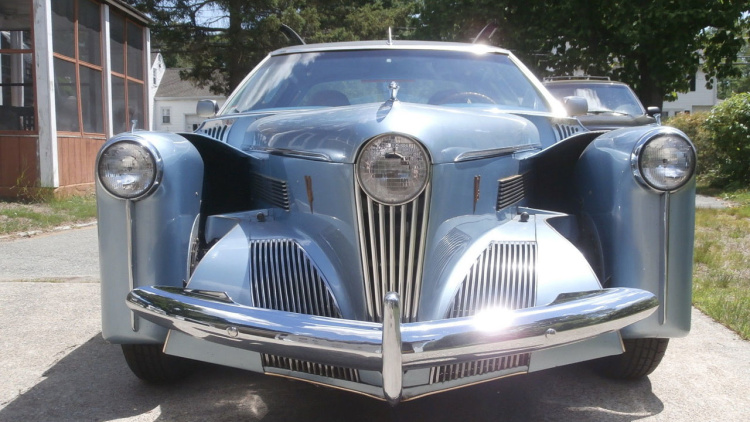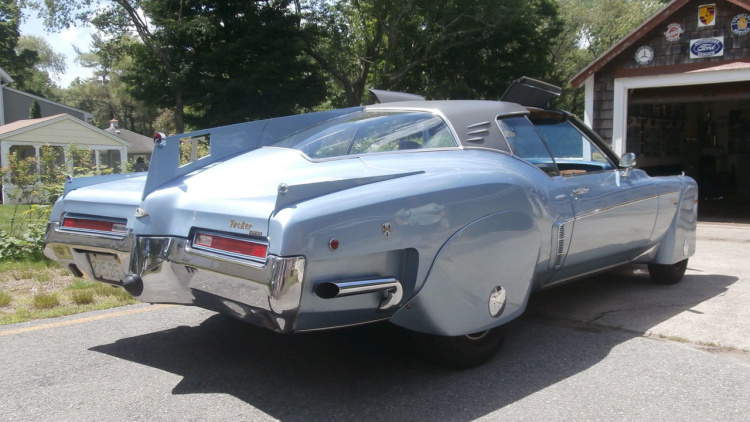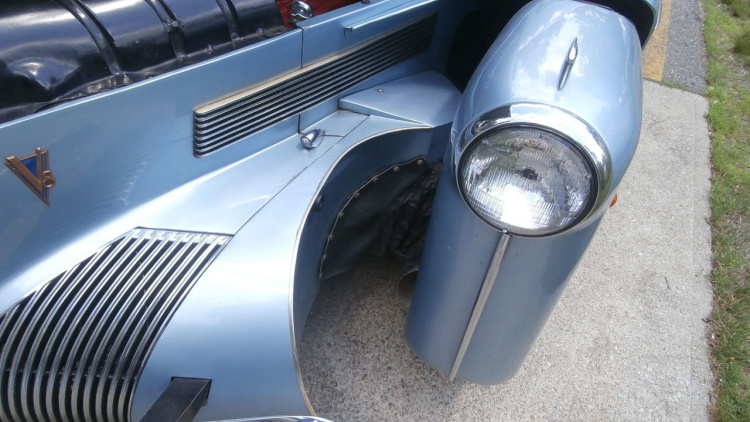The Tucker Torpedo is one of the great what-if stories of automotive history. Preston Tucker hoped to revolutionize the industry with a car unlike any other on the road at the time. However, due to a variety of problems, he only managed build 51 vehicles before closing shop.
The Tucker 48 (named after its model year) is an automobile conceived by Preston Tucker and briefly produced in Chicago in 1948. Only 51 cars were made before the company folded on March 3, 1949, due to negative publicity initiated by the news media, a Securities and Exchange Commission investigation and a heavily publicized stock fraud trial (in which allegations were proven baseless in court with a full acquittal). Speculation exists the Big Three automakers and Michigan senator Homer S. Ferguson also had a role in the Tucker Corporation’s demise. The 1988 movie Tucker: The Man and His Dream is based on the saga surrounding the car’s production. The film’s director, Francis Ford Coppola, is a Tucker owner and displays his vehicle on the grounds of his winery. The 48’s original proposed price was said to be $1,000, but the actual selling price was closer to $4,000.
A 1948 Tucker sedan was featured in the July 26, 2011, installment of NBC’s It’s Worth What? television show. The car’s estimated value at that time was US$1,200,000. The car is commonly referred to as the “Tucker Torpedo”. This name was never used in conjunction with the actual production car, and its name was officially “Tucker 48”
According to Autoblog:
This Tucker Torpedo replica Tucker “replica” might be one of the ugliest monstrosities ever put together. However, we might extend some leniency to the creator, as the vehicle isn’t actually trying to replicate the classic look of the 1948 Tucker 48 (a.k.a. ‘Torpedo’). Instead, it is attempting to reproduce an earlier prototype from 1946 that actually features that weird, trident nose. According to the seller, his uncle built the car as a labor of love and supposedly used actual plans from Tucker as inspiration.
Underneath all of the crazy changes is a 1971 Buick Riviera powered by a 455-cubic-inch (7.5-liter) Buick V8. Some of the replica’s odder modifications include the front fenders that turn with the wheels and the fin running down the back. All three headlights work, but the one in the middle is only for the high beams. Oddly, the small hinged sections on the roof are meant to open to avoid hitting your head when getting in or out. writes Autoblog
Some components and features of the car were innovative and ahead of their time. The most recognizable feature of the Tucker ’48, a directional third headlight (known as the “Cyclops Eye”), would activate at steering angles of greater than 10 degrees to light the car’s path around corners. At the time, 17 states had laws against cars having more than two headlights.Tucker fabricated a cover for the cyclops center light for use in these states.
The car had a rear engine and rear-wheel drive. A perimeter frame surrounded the vehicle for crash protection, as well as a roll bar integrated into the roof. The steering box was behind the front axle to protect the driver in a front-end accident. The instrument panel and all controls were within easy reach of the steering wheel, and the dashboard was padded for safety. The windshield was made of shatter-proof glass and designed to pop out in a collision to protect occupants. The car’s parking brake had a separate key so it could be locked in place to prevent theft. The doors extended into the roof, to ease entry and exit
The world premiere of the much-hyped Tucker ’48 car was set for June 19, 1947. Over 3,000 people showed up at the factory in Chicago for lunch, a train tour of the plant, and the unveiling of the first prototype. The unveiling appeared doomed, however, as last-minute problems cropped up. The night before the premiere, two of the prototype’s independent suspension arms snapped under the car’s weight. (The prototype was extremely heavy, much heavier than the other ’48s.) Minor engine problems were fixed, and the car was presentable by the time of the premiere. However, the experimental 589 engine was extremely loud. Tucker told the band to play as loud as possible to drown out the noise.
Additionally the high-voltage starter required the use of outside power to get the engine started, so Tucker had the engineering team keep the engine running during the entire event, fearing that the public would see how much effort was required to get the engine started. As the car was driven on to the platform, the liquid coolant boiled over and some steam escaped from the car, but no one seemed to notice

